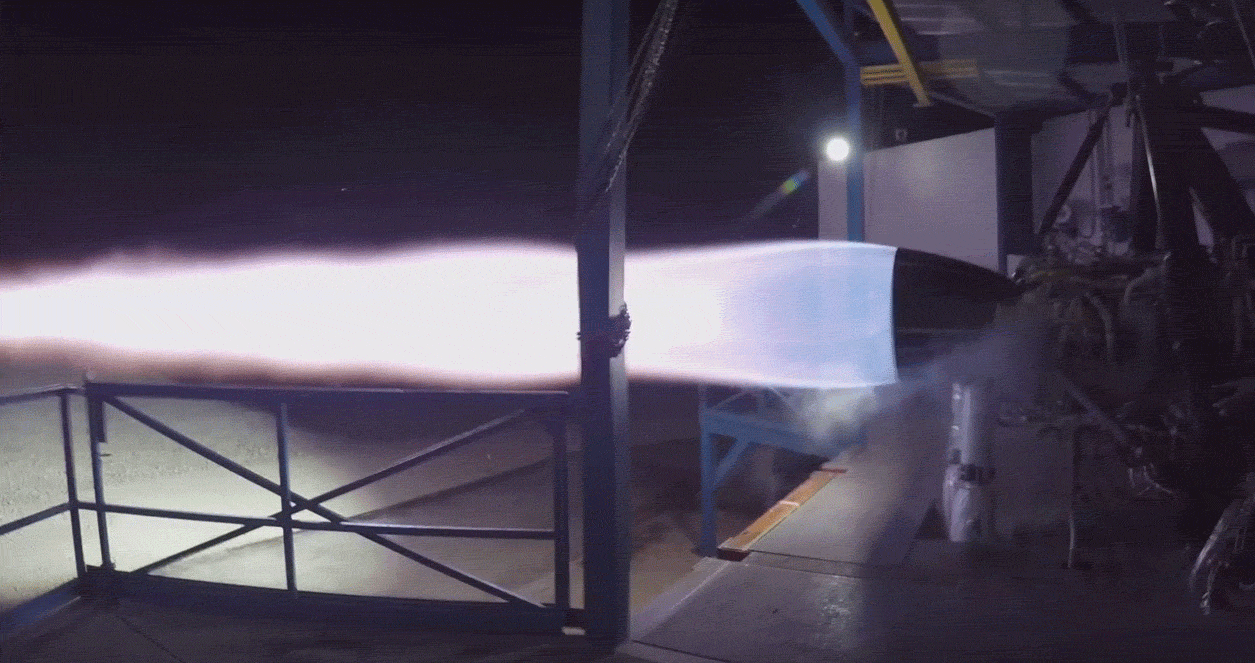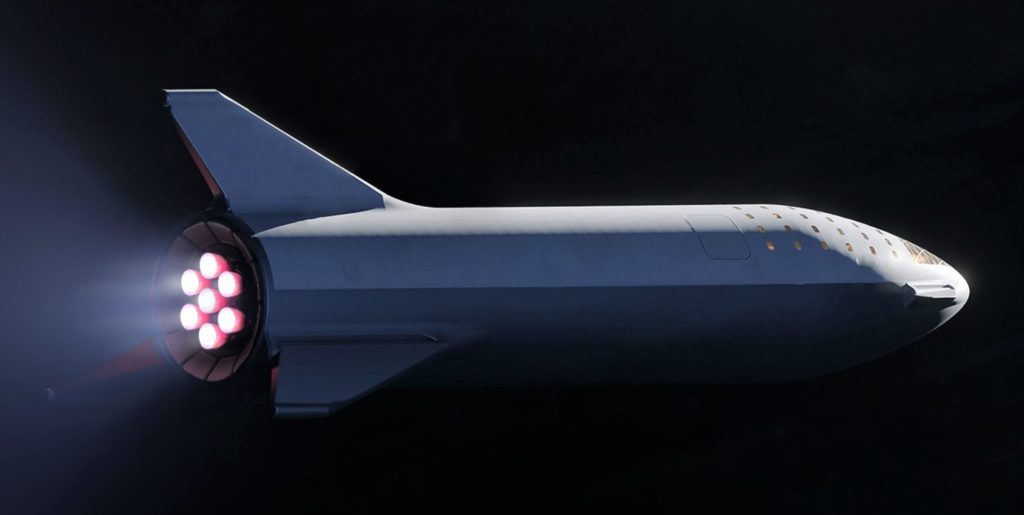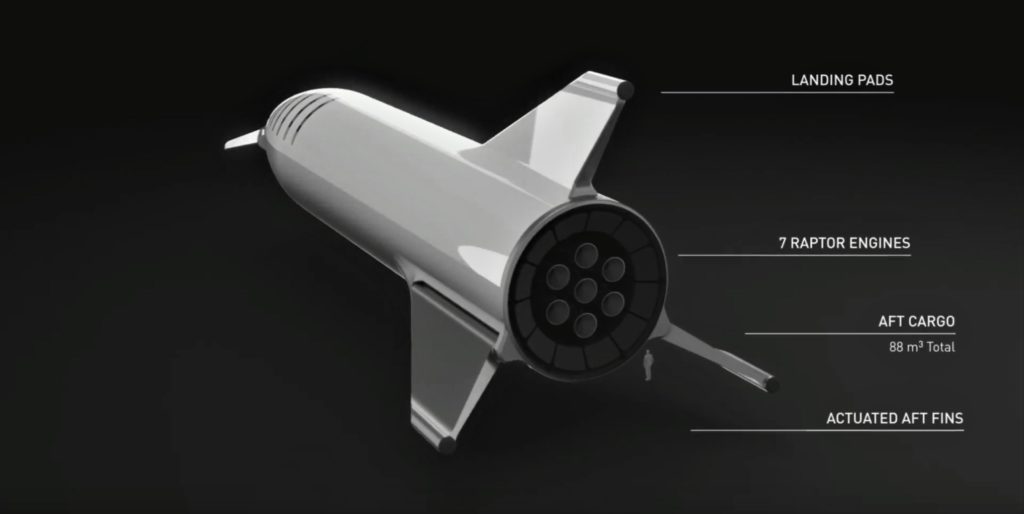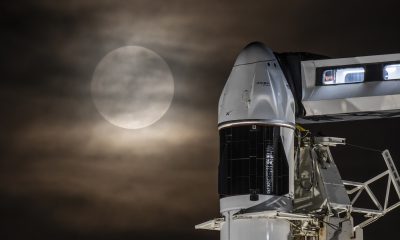

News
SpaceX’s Raptor engine nears flight-readiness for BFR spaceship hop tests
In a presentation that revealed plans for a private mission to the Moon in as early as 2023, SpaceX CEO Elon Musk dedicated a couple minutes to BFR’s booster and spaceship rocket engine of choice, Raptor. Musk had nothing but praise for SpaceX’s propulsion engineers and technicians, stating that he was “really excited” about the propulsion system’s advanced design.
SpaceX has completed over 1,200 seconds of firing across 42 main Raptor engine tests. pic.twitter.com/EhxbPjd8Cj
— SpaceX (@SpaceX) September 29, 2017
Judging from a total of 1200 seconds of hot-fires completed just under a year ago, it’s safe to assume that Raptor has soared beyond that measure. Most recently, photos captured earlier this summer showed that a new prototype was installed on SpaceX’s horizontal Raptor test stand in McGregor, Texas, looking nearly identical to the deep black Raptor nozzle shown in Monday’s presentation. Previous Raptor prototypes seen during testing or at the test stand appeared to have a nozzle closer to SpaceX’s silver Merlin 1Ds, whereas this newest iteration’s nozzle doesn’t seem to reflect the powerful spotlights surrounding it.
Perhaps not a coincidence, SpaceX’s propulsion engineering lead Tom Mueller stated in May 2018 that flight-ready Raptors were already “in work”, with the implication being that the finalized Raptor design had been completed and that manufacturing work was beginning in earnest. Barring an unexpected shift in testing strategies, SpaceX will optimize and verify Raptor’s flight design over the course of several hundred seconds of static fire tests, eventually leading into the same practices used for Falcon 9.
- A September 2018 render of Starship (then BFS) shows one of the vehicle’s two hinged wings/fins/legs. (SpaceX)
- In 2018, Musk decided to sidestep vacuum engines entirely, moving to 7 SL Raptors. (SpaceX)
“This is a stupidly hard problem and SpaceX engineering has done a great job with this design.” In a May 2018 tweet, Musk added that “this engine is something special.” – Elon Musk, 09/17/18
Prior to being installed on any BFR prototypes, all Raptors will thus go through acceptance testing in Texas, potentially followed by a full-up static fire of the first completed BFR spaceships. Falcon 9 boosters – capable of roughly 7600 kN (1.7 million lbf) of thrust – are routinely tested in McGregor, while a full BFR spaceship with 2017-grade Raptors (1700 kN at sea level) would produce 12,000 kN (2.7 million lbf) of thrust with all Raptors firing. However, due to the sheer difficulty of transporting something 9 meters in diameter by road, it’s more likely that SpaceX will need to build up a dedicated static fire and hop test facility near the coast of Texas, at a spot called Boca Chica.
An immense liquid oxygen (LOX) tank just arrived at @SpaceX's prospective Boca Chica, TX facility, likely to be dedicated to BFR & BFS testing. @NASASpaceflight forum user "Nomadd" caught some of the first detailed photos, as well as the tank's arrival at SpaceX land on July 11. pic.twitter.com/hr7SeA6BGw
— Eric Ralph (@13ericralph31) July 12, 2018
Getting to hop tests
As it turns out, massive propellant storage tanks (vacuum insulated) have already begun arriving at SpaceX’s Boca Chica facilities, currently dedicated to a duo of tracking and communications radars to be used for Crew Dragon communications. Over the course of the next 12 or so months, SpaceX is thus likely to expand and develop its Boca Chica facilities, culminating – if all goes well – sometime late next year with the first shipment of a prototype BFR spaceship from Port of Los Angeles, through the Panama Canal, to Port of Brownsville, Texas.
“I’m really excited about this engine design, I think the SpaceX propulsion team has done an amazing job – the SpaceX structures and aero team has done a phenomenal job in the design of this.”
“Even others in the aerospace industry don’t know what question to ask – once we could frame the question [with precision], the answers [for Raptor and BFR R&D] flowed.” – Elon Musk, 09/17/18

SpaceX has already completed the first composite segment (both a section of the fuselage and of a propellant tank) of the first BFR spaceship prototype, and Musk further stated that BFR’s structural engineers and technicians would begin fabricating the spaceship prototype’s propellant tank domes and engine section “soon”. A vast amount of work remains to be completed before that prototype will begin to look anything like an actual spaceship, and the exact fidelity SpaceX is hoping to achieve with it is unclear.
If the company tries to get as close as possible to a finished product (within reason, of course) before beginning propulsive hop tests in Texas, a very late-2019 debut of that test campaign could be a practical goal. It’s not a perfect comparison, but Falcon 9 is perhaps the best prior example of SpaceX’s speed of development, moving from structural fabrication and testing (albeit with Falcon 5 in mind) in 2006 and 2007 to a full-up orbital launch of the first Falcon 9 in mid-2010, with milestones like the first static fire of a booster octaweb and nine Merlin 1C engines 6-12 months prior.
For prompt updates, on-the-ground perspectives, and unique glimpses of SpaceX’s rocket recovery fleet check out our brand new LaunchPad and LandingZone newsletters!
News
Tesla UK sales see 14% year-over-year rebound in June: SMMT data
The SMMT stated that Tesla sales grew 14% year-over-year to 7,719 units in June 2025.

Tesla’s sales in the United Kingdom rose in June, climbing 14% year-over-year to 7,719 units, as per data from the Society of Motor Manufacturers and Traders (SMMT). The spike in the company’s sales coincided with the first deliveries of the updated Model Y last month.
Model Y deliveries support Tesla’s UK recovery
Tesla’s June performance marked one of its strongest months in the UK so far this year, with new Model Y deliveries contributing significantly to the company’s momentum.
While the SMMT listed Tesla with 7,719 deliveries in June, independent data from New AutoMotive suggested that the electric vehicle maker registered 7,891 units during the month instead. However, year-to-date figures for Tesla remain 2% down compared to 2024, as per a report from Reuters.
While Tesla made a strong showing in June, rivals are also growing. Chinese automaker BYD saw UK sales rise nearly fourfold to 2,498 units, while Ford posted the highest EV growth among major automakers, with a more than fourfold increase in the first half of 2025.
Overall, the UK’s battery electric vehicle (BEV) demand surged 39% to to 47,354 units last month, helping push total new car sales in the UK to 191,316 units, up 6.7% from the same period in 2024.
EV adoption accelerates, but concerns linger
June marked the best month for UK car sales since 2019, though the SMMT cautioned that growth in the electric vehicle sector remains heavily dependent on discounting and support programs. Still, one in four new vehicle buyers in June chose a battery electric vehicle.
SMMT Chief Executive Mike Hawes noted that despite strong BEV demand, sales levels are still below regulatory targets. “Further growth in sales, and the sector will rely on increased and improved charging facilities to boost mainstream electric vehicle adoption,” Hawes stated.
Also taking effect this week was a new US-UK trade deal, which lowers tariffs on UK car exports to the United States from 27.5% to 10%. The agreement could benefit UK-based EV producers aiming to expand across the country.
News
Tesla Model 3 ranks as the safest new car in Europe for 2025, per Euro NCAP tests
Despite being on the market longer than many of its rivals, the Tesla Model 3 continues to set the bar for vehicle safety.

The Tesla Model 3 has been named the safest new car on sale in 2025, according to the latest results from the Euro NCAP. Among 20 newly tested vehicles, the Model 3 emerged at the top of the list, scoring an impressive 359 out of 400 possible points across all major safety categories.
Tesla Model 3’s safety systems
Despite being on the market longer than many of its rivals, the Tesla Model 3 continues to set the bar for vehicle safety. Under Euro NCAP’s stricter 2025 testing protocols, the electric sedan earned 90% for adult occupant protection, 93% for child occupant protection, 89% for pedestrian protection, and 87% for its Safety Assist systems.
The updated Model 3 received particular praise for its advanced driver assistance features, including Tesla’s autonomous emergency braking (AEB) system, which performed well across various test scenarios. Its Intelligent Speed Assistance and child presence detection system were cited as noteworthy features as well, as per a WhatCar report.
Other notable safety features include the Model 3’s pedestrian-friendly pop-up hood and robust crash protection for both front and side collisions. Euro NCAP also highlighted the Model 3’s ability to detect vulnerable road users during complex maneuvers, such as turning across oncoming traffic.
Euro NCAP’s Autopilot caution
While the Model 3’s safety scores were impressive across the board, Euro NCAP did raise concerns about driver expectations of Tesla’s Autopilot system. The organization warned that some owners may overestimate the system’s capabilities, potentially leading to misuse or inattention behind the wheel. Even so, the Model 3 remained the highest-scoring vehicle tested under Euro NCAP’s updated criteria this year.
The Euro NCAP’s concerns are also quite interesting because Tesla’s Full Self-Driving (FSD) Supervised, which is arguably the company’s most robust safety suite, is not allowed for public rollout in Europe yet. FSD Supervised would allow the Model 3 to navigate inner city streets with only minimal human supervision.
Other top scorers included the Volkswagen ID.7, Polestar 3, and Geely EX5, but none matched the Model 3’s total score or consistency across categories. A total of 14 out of 20 newly tested cars earned five stars, while several models, including the Kia EV3, MG ZS, and Renault 5, fell short of the top rating.
Elon Musk
Why Tesla’s Q3 could be one of its biggest quarters in history
Tesla could stand to benefit from the removal of the $7,500 EV tax credit at the end of Q3.

Tesla has gotten off to a slow start in 2025, as the first half of the year has not been one to remember from a delivery perspective.
However, Q3 could end up being one of the best the company has had in history, with the United States potentially being a major contributor to what might reverse a slow start to the year.
Earlier today, the United States’ House of Representatives officially passed President Trump’s “Big Beautiful Bill,” after it made its way through the Senate earlier this week. The bill will head to President Trump, as he looks to sign it before his July 4 deadline.
The Bill will effectively bring closure to the $7,500 EV tax credit, which will end on September 30, 2025. This means, over the next three months in the United States, those who are looking to buy an EV will have their last chance to take advantage of the credit. EVs will then be, for most people, $7,500 more expensive, in essence.
The tax credit is available to any single filer who makes under $150,000 per year, $225,000 a year to a head of household, and $300,000 to couples filing jointly.
Ending the tax credit was expected with the Trump administration, as his policies have leaned significantly toward reliance on fossil fuels, ending what he calls an “EV mandate.” He has used this phrase several times in disagreements with Tesla CEO Elon Musk.
Nevertheless, those who have been on the fence about buying a Tesla, or any EV, for that matter, will have some decisions to make in the next three months. While all companies will stand to benefit from this time crunch, Tesla could be the true winner because of its sheer volume.
If things are done correctly, meaning if Tesla can also offer incentives like 0% APR, special pricing on leasing or financing, or other advantages (like free Red, White, and Blue for a short period of time in celebration of Independence Day), it could see some real volume in sales this quarter.
You can now buy a Tesla in Red, White, and Blue for free until July 14 https://t.co/iAwhaRFOH0
— TESLARATI (@Teslarati) July 3, 2025
Tesla is just a shade under 721,000 deliveries for the year, so it’s on pace for roughly 1.4 million for 2025. This would be a decrease from the 1.8 million cars it delivered in each of the last two years. Traditionally, the second half of the year has produced Tesla’s strongest quarters. Its top three quarters in terms of deliveries are Q4 2024 with 495,570 vehicles, Q4 2023 with 484,507 vehicles, and Q3 2024 with 462,890 vehicles.
-

 Elon Musk4 days ago
Elon Musk4 days agoTesla investors will be shocked by Jim Cramer’s latest assessment
-

 News1 week ago
News1 week agoTesla Robotaxi’s biggest challenge seems to be this one thing
-

 Elon Musk2 weeks ago
Elon Musk2 weeks agoFirst Look at Tesla’s Robotaxi App: features, design, and more
-

 News2 weeks ago
News2 weeks agoSpaceX and Elon Musk share insights on Starship Ship 36’s RUD
-

 News2 weeks ago
News2 weeks agoWatch Tesla’s first driverless public Robotaxi rides in Texas
-

 News1 week ago
News1 week agoWatch the first true Tesla Robotaxi intervention by safety monitor
-

 News2 weeks ago
News2 weeks agoTesla has started rolling out initial round of Robotaxi invites
-

 Elon Musk2 weeks ago
Elon Musk2 weeks agoTesla to launch in India in July with vehicles already arriving: report




















